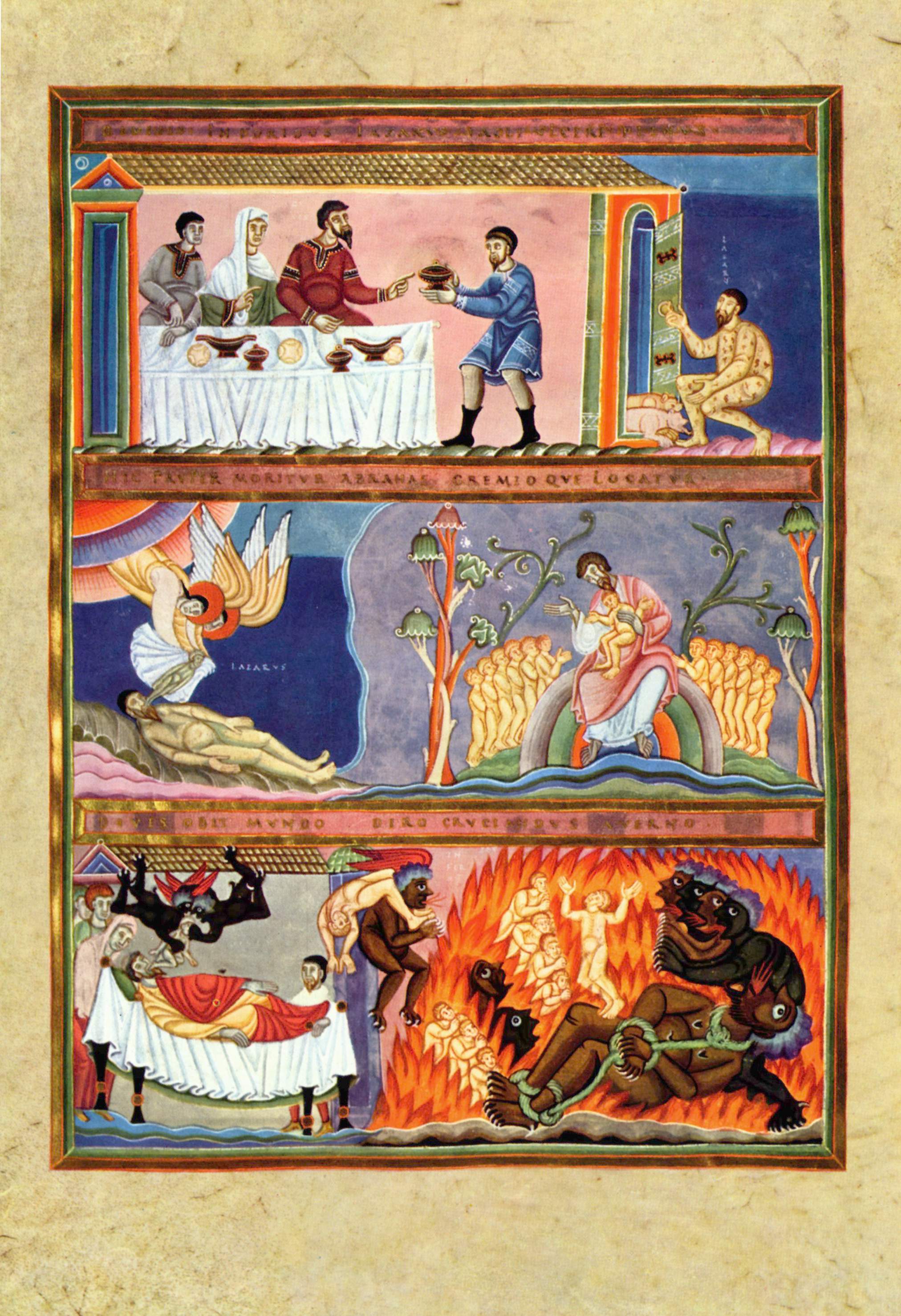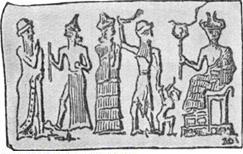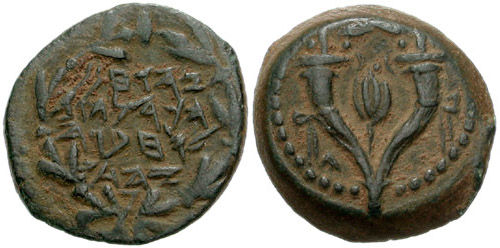|
Hinnom
The Valley of Hinnom ( he, , lit=Valley of the son of Hinnom, translit=Gēʾ ḇen-Hīnnōm) is a historic valley surrounding Ancient Jerusalem from the west and southwest. The valley is also known by the name Gehinnom ( ''Gēʾ-Hīnnōm'', lit. 'Valley of Hinnom') an alternative Biblical Hebrew form which survived into Aramaic and has received various fundamental theological connotations, and by the Greek and Syriac transliteration Gehenna (Γέεννα ''Géenna''/ܓܼܼܗܲܢܵܐ ''Gihanna''). The Valley of Hinnom is first mentioned in the Hebrew Bible as part of the border between the tribes of Judah and Benjamin ( Joshua 15:8). During the late First Temple period, it was the site of the Tophet, where some of the kings of Judah had sacrificed their children by fire ( Jeremiah 7:31). Thereafter, it was cursed by the biblical prophet Jeremiah ( Jeremiah 19:2– 6). In later Jewish rabbinic literature, Gehinnom became associated with divine punishment in Jewish Apoc ... [...More Info...] [...Related Items...] OR: [Wikipedia] [Google] [Baidu] |
Tophet
In the Hebrew Bible, Tophet or Topheth ( hbo, תֹּפֶת, Tōp̄eṯ; grc-gre, Ταφέθ, taphéth; la, Topheth) is a location in Jerusalem in the Valley of Hinnom (Gehenna), where worshipers engaged in a ritual involving "passing a child through the fire", most likely child sacrifice. Traditionally, the sacrifices have been ascribed to a god named Moloch. The Bible condemns and forbids these sacrifices, and the tophet is eventually destroyed by king Josiah, although mentions by the prophets Jeremiah, Ezekiel, and Isaiah suggest that the practices associated with the tophet may have persisted. Most scholars agree that the ritual performed at the tophet was child sacrifice, and they connect it to similar episodes throughout the Bible and recorded in Phoenicia (whose inhabitants were referred to as Canaanites in the Bible) and Carthage by Hellenistic sources. There is disagreement about whether the sacrifices were offered to a god named "Moloch". Based on Phoenician and Carthagin ... [...More Info...] [...Related Items...] OR: [Wikipedia] [Google] [Baidu] |
Jerusalem
Jerusalem (; he, יְרוּשָׁלַיִם ; ar, القُدس ) (combining the Biblical and common usage Arabic names); grc, Ἱερουσαλήμ/Ἰεροσόλυμα, Hierousalḗm/Hierosóluma; hy, Երուսաղեմ, Erusałēm. is a city in Western Asia. Situated on a plateau in the Judaean Mountains between the Mediterranean and the Dead Sea, it is one of the oldest cities in the world and is considered to be a holy city for the three major Abrahamic religions: Judaism, Christianity, and Islam. Both Israelis and Palestinians claim Jerusalem as their capital, as Israel maintains its primary governmental institutions there and the State of Palestine ultimately foresees it as its seat of power. Because of this dispute, neither claim is widely recognized internationally. Throughout its long history, Jerusalem has been destroyed at least twice, besieged 23 times, captured and recaptured 44 times, and attacked 52 times. According to Eric H. Cline's tally in J ... [...More Info...] [...Related Items...] OR: [Wikipedia] [Google] [Baidu] |
Christian Views On Hades
Hades, according to various Christian denominations, is "the place or state of departed spirits",''Oxford Dictionary of the Christian Church'' (Oxford University Press 2005 ): ''Hades'' borrowing the name of Hades, the Greek god of the underworld. It is often associated with the Jewish concept of Sheol. In the Bible Septuagint In the Septuagint (an ancient translation of the Hebrew Bible into Greek), the Greek term ᾅδης (Hades) is used to translate the Hebrew term שאול ( Sheol) in almost all instances, only three of them are not matched with Hades: (γῆ, "earth, land"), (θάνατος, "death") and (βόθρου or λάκκος, "pit".) New Testament The Hebrew phrase לא־תעזב נפשׁי לשׁאול ("you will not abandon my soul to Sheol") in is quoted in the Koine Greek New Testament, as οὐκ ἐγκαταλείψεις τὴν ψυχήν μου εἰς ᾅδου ("you will not abandon my soul to Hades"). In the Textus Receptus version of the Ne ... [...More Info...] [...Related Items...] OR: [Wikipedia] [Google] [Baidu] |
Christian Views On Hell
In Christian theology, Hell is the place or state into which, by God's definitive judgment, unrepentant sinners pass in the general judgment, or, as some Christians believe, immediately after death ( particular judgment). Its character is inferred from teaching in the biblical texts, some of which, interpreted literally, have given rise to the popular idea of Hell. Theologians today generally see Hell as the logical consequence of rejecting union with God and with God's justice and mercy. Different Hebrew and Greek words are translated as "Hell" in most English-language Bibles. These words include: * " Sheol" in the Hebrew Bible, and " Hades" in the New Testament. Many modern versions, such as the New International Version, translate Sheol as "grave" and simply transliterate "Hades". It is generally agreed that both ''sheol'' and ''hades'' do not typically refer to the place of eternal punishment, but to the grave, the temporary abode of the dead, the underworld. * " Gehe ... [...More Info...] [...Related Items...] OR: [Wikipedia] [Google] [Baidu] |
Child Sacrifice
Child sacrifice is the ritualistic killing of children in order to please or appease a deity, supernatural beings, or sacred social order, tribal, group or national loyalties in order to achieve a desired result. As such, it is a form of human sacrifice. Child sacrifice is thought to be an extreme extension of the idea that the more important the object of sacrifice, the more devout the person giving it up is. The practice of child sacrifice in Europe and the Near East appears to have ended as a part of the religious transformations of late antiquity. Pre-Columbian cultures Archaeologists have found the remains of more than 140 children who were sacrificed in Peru's northern coastal region. Aztec culture Archeologists have found remains of 42 children. It is alleged that these remains were sacrificed to Tlaloc (and a few to Ehécatl, Quetzalcoatl and Huitzilopochtli) in the offerings of the Great Pyramid of Tenochtitlan by the Aztecs of pre-Columbian Mexico. In ev ... [...More Info...] [...Related Items...] OR: [Wikipedia] [Google] [Baidu] |
Biblical Hebrew
Biblical Hebrew (, or , ), also called Classical Hebrew, is an archaic form of the Hebrew language, a language in the Canaanite branch of Semitic languages spoken by the Israelites in the area known as the Land of Israel, roughly west of the Jordan River and east of the Mediterranean Sea. The term "Hebrew" (''ivrit'') was not used for the language in the Bible, which was referred to as (''sefat kena'an'', i.e. language of Canaan) or (''Yehudit'', i.e. Judaean), but the name was used in Ancient Greek and Mishnaic Hebrew texts. The Hebrew language is attested in inscriptions from about the 10th century BCE, and spoken Hebrew persisted through and beyond the Second Temple period, which ended in the siege of Jerusalem (70 CE). It eventually developed into Mishnaic Hebrew, spoken up until the fifth century CE. Biblical Hebrew as recorded in the Hebrew Bible reflects various stages of the Hebrew language in its consonantal skeleton, as well as a vocalization ... [...More Info...] [...Related Items...] OR: [Wikipedia] [Google] [Baidu] |
Mount Zion
Mount Zion ( he, הַר צִיּוֹן, ''Har Ṣīyyōn''; ar, جبل صهيون, ''Jabal Sahyoun'') is a hill in Jerusalem, located just outside the walls of the Old City. The term Mount Zion has been used in the Hebrew Bible first for the City of David (, ; , ) and later for the Temple Mount, but its meaning has shifted and it is now used as the name of ancient Jerusalem's Western Hill. In a wider sense, the term Zion is also used for the entire Land of Israel. Etymology The etymology of the word '' Zion'' is uncertain. Mentioned in the Bible in the Book of Samuel (2 Samuel 5:7) as the name of the Jebusite fortress conquered by King David, its origin likely predates the Israelites. If Semitic, it may be associated with the Hebrew root ''ṣiyyôn'' ("castle"). Though not spoken in Jerusalem until 1,700 years later, the name is similar in Arabic and may be connected to the root ''ṣiyya'' ("dry land") or the Arabic ''šanā'' ("protect" or "citadel"). It might also be re ... [...More Info...] [...Related Items...] OR: [Wikipedia] [Google] [Baidu] |
Ancient Jerusalem
During its long history, Jerusalem has been attacked 52 times, captured and recaptured 44 times, besieged 23 times, and destroyed twice.. According to Eric H. Cline's tally in Jerusalem Besieged. The oldest part of the city was settled in the 4th millennium BCE, making Jerusalem one of the oldest cities in the world. Given the city's central position in both Israeli nationalism and Palestinian nationalism, the selectivity required to summarize more than 5,000 years of inhabited history is often influenced by ideological bias or background (see Historiography and nationalism). For example, the Jewish periods of the city's history are important to Israeli nationalists, whose discourse states that modern Jews originate and descend from the Israelites, while the Islamic periods of the city's history are important to Palestinian nationalists, whose discourse suggests that modern Palestinians descend from all the different peoples who have lived in the region. As a result, both si ... [...More Info...] [...Related Items...] OR: [Wikipedia] [Google] [Baidu] |
Avodah Zarah
''Avodah Zarah'' (Hebrew: , or "foreign worship", meaning "idolatry" or "strange service") is the name of a tractate of the Talmud, located in ''Nezikin'', the fourth Order of the Talmud dealing with damages. The main topic of the tractate is laws pertaining to Jews living amongst Gentiles, including regulations about the interaction between Jews and "avodei ha kochavim", which literally interpreted is "Worshipers of the stars", but is most often translated as "idolaters", "pagans", or "heathen." Mishna The tractate consists of five chapters. The number of mishnayot is according to the standard numbering; however, different versions split up the individual mishnayot, or combine them, and the chapter breaks may vary, as well. Chapter One (nine mishnayot) deals with the prohibition of trade with idolaters around their festivals, such as Saturnalia and Kalenda (so as not to be complicit in the festive idolatry) and with the items that are forbidden to be sold to idolaters (w ... [...More Info...] [...Related Items...] OR: [Wikipedia] [Google] [Baidu] |
Bava Batra
Bava Batra (also Baba Batra; Talmudic Aramaic: בָּבָא בַּתְרָא "The Last Gate") is the third of the three Talmudic tractates in the Talmud in the order Nezikin; it deals with a person's responsibilities and rights as the owner of property. It is part of Judaism's oral law. Originally it, together with Bava Kamma and Bava Metzia, formed a single tractate called ''Nezikin'' (torts or damages). Unlike Bava Kamma and Bava Metzia, this tractate is not the exposition of a certain passage in the Torah. Mishnah The Mishnah is divided into ten chapters, as follows: * Regulations relating to jointly owned property (chapter 1) * Responsibilities of a property owner towards his neighbor (chapter 2) * Established rights of ownership and rights connected with property (chapter 3) * Laws referring to the acquisition of property by purchase, as also what constitutes an unclean vessel when purchased from a Gentile (chapters 4-7) * Laws of inheritance (chapters 8-9) * Laws concer ... [...More Info...] [...Related Items...] OR: [Wikipedia] [Google] [Baidu] |
Nedarim (Talmud)
Nedarim ( he, נדרים, lit=vows) is a masechet of the order of Nashim of the Mishnah and the Talmud. . Its subject is laws relating to the , a kind of vow or oath in Judaism. The place assigned to this treatise in the mishnaic order of Seder Nashim differs in the various editions, although it is generally placed third both in the Mishnah and in the Tosefta. In the Mishnah it is divided into eleven chapters containing ninety paragraphs in all. Contents * Chapter 1: The phrases, words, and corruptions of words (e.g., "konam," "konaḥ," "konas," instead of " |
Ta'anit (Talmud)
''Ta'anit'' or ''Taanis'' ( he, תַּעֲנִית) is a volume (or "tractate") of the Mishnah, Tosefta, and both Talmuds. In Judaism these are the basic works of rabbinic literature. The tractate of Ta'anit is devoted chiefly to the fast-days, their practices and prayers. In most editions of the Talmud this treatise is the ninth in the mishnaic order of Seder Mo'ed, and is divided into four chapters containing thirty-four folio in all. The following is a summary of its contents: Summary of the Mishnah and Babylonian Talmud Chapter 1: Concerning the date on which one begin to mention rain in the second blessing of Shemoneh Esreh and to pray for rain in the eighth blessing (1:1-3); the time during which one fasts on account of scarcity of rain—two successive periods of three days each, and a final one of seven days—and the distinctions between these various days with regard to strictness in fasting (1:4-6); nature of the national mourning in case no rain falls despite m ... [...More Info...] [...Related Items...] OR: [Wikipedia] [Google] [Baidu] |
.jpg)


_by_Anonymous_16th_Century_1_of_2_(582x800).jpg)



